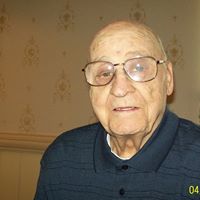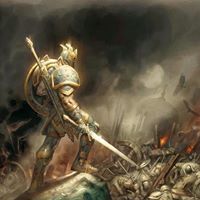Clarence F Miller
age ~94
from Princeton, KY
- Also known as:
-
- Clarence Dr Miller
- Clarence D Miller
Clarence Miller Phones & Addresses
- Princeton, KY
- Lancaster, PA
- 621 Ravenwoods Dr, Chesapeake, VA 23322 • 7575468772
- Goleta, CA
Vehicle Records
-
Clarence D Miller Jr
view source -
Address:2403 Featherbed Dr, Chesapeake, VA 23325
-
Phone:7574204972
-
VIN:2MEFM74VX7X610477
-
Make:MERCURY
-
Model:GRAND MARQUIS
-
Year:2007
Lawyers & Attorneys

Clarence Adam Miller Jr. - Lawyer
view sourceLicenses:
Texas - Eligible To Practice In Texas 2004
Education:
Tulane University Law School
Degree - Doctor of Jurisprudence/Juris Doctor (J.D.)
Graduated - 1957
Degree - Doctor of Jurisprudence/Juris Doctor (J.D.)
Graduated - 1957
License Records
Clarence H Miller
License #:
2892 - Expired
Issued Date:
Apr 20, 1957
Renew Date:
Dec 10, 1986
Expiration Date:
Dec 10, 1986
Type:
Professional Engineer
Clarence F Miller
Address:
Lancaster, PA 17602
License #:
DC000773L - Expired
Category:
Chiropractic
Type:
Chiropractor
Clarence F Miller
Address:
Lancaster, PA 17602
License #:
AJ000773P - Expired
Category:
Chiropractic
Type:
Adjunctive Procedures
Clarence R Miller Jr
License #:
RS145216A - Expired
Category:
Real Estate Commission
Type:
Real Estate Salesperson-Standard
Isbn (Books And Publications)




Complete Works of St. Thomas More Vol. 10: The Debellation of Salem and Bizance
view sourceAuthor
Clarence H. Miller
ISBN #
0300033761

The Yale Edition of the Complete Works of St. Thomas More: The Confutation of Tyndale`s Answer
view sourceAuthor
Clarence H. Miller
ISBN #
0300062311



Name / Title
Company / Classification
Phones & Addresses
Treasurer , Director
Mt Ararat Missionary Baptist Church, Inc
Chairman, Director, Vice President
The Ambassadors of Black Youth, Inc
WILLIAMS ELECTRIC, INC
H-ELEVEN ONE INNOVATION LC
Director
Chesapeake Center
Health Practitioner's Office
Health Practitioner's Office
355 Crawford St, Portsmouth, VA 23704
7574361645
7574361645
Principal
Kelgen, Inc
Business Services at Non-Commercial Site · Nonclassifiable Establishments
Business Services at Non-Commercial Site · Nonclassifiable Establishments
1416 Rose Virginia Rd, Reading, PA 19611
Us Patents
-
Acoustic Tracking System
view source -
US Patent:54105196, Apr 25, 1995
-
Filed:Nov 19, 1993
-
Appl. No.:8/155950
-
Inventors:John D. Hall - Walnut Creek CA
Bruce Gordon - Santa Barbara CA
Clarence E. Miller - Goleta CA -
Assignee:Coastal & Offshore Pacific Corporation - Walnut Creek CA
-
International Classification:G01S 380
-
US Classification:367127
-
Abstract:An acoustic tracking system designed to allow scientists and fishermen to follow dolphins and whales without harming or harassing them. The system utilizes six flow shielded hydrophones mounted on the bottom of a vessel in two arrays of three hydrophones in each array. Acoustic signals of interest (dolphin calls) which strike the hydrophone piezo-electric elements are transmitted to a receiver-display device which determines and displays both the bearing to the signal of interest and the relative range from the vessel to that signal. The receiver-display device utilizes digital microprocessors to determine the difference in signal arrival time of an incoming signal at pairs of hydrophones. The resulting computed bearing to the dolphin call is displayed as a lighted indicator on an electronic heading display. In addition, the digital microprocessors compare the received sound pressure level of incoming signals of interest and display the relative range as a series of lighted LED's on the electronic heading indicator.
-
Acoustic Tracking System
view source -
US Patent:55638490, Oct 8, 1996
-
Filed:Jul 19, 1995
-
Appl. No.:8/495553
-
Inventors:John D. Hall - Walnut Creek CA
Bruce Gordon - Santa Barbara CA
Clarence E. Miller - Goleta CA
Kenneth D. Brewer - La Jolla CA -
Assignee:Coastal & Offshore Pacific Corporation - Walnut Creek CA
-
International Classification:G01S 380
-
US Classification:367127
-
Abstract:An acoustic tracking system designed to allow scientists and fishermen to follow dolphins and whales without harming or harassing them. The system utilizes six flow shielded hydrophones mounted on the bottom of a vessel in two arrays of three hydrophones in each array. Acoustic signals of interest (dolphin calls) which strike the hydrophone piezo-electric elements are transmitted to a receiver-display device which determines and displays both the bearing to the signal of interest and the relative range from the vessel to that signal. The receiver-display device utilizes digital microprocessors to determine the difference in signal arrival time of an incoming signal at pairs of hydrophones. The resulting computed bearing to the dolphin call is displayed as a lighted indicator on an electronic heading display. In addition, the digital microprocessors compare the received sound pressure level of incoming signals of interest and display the relative range as a series of lighted LED's on the electronic heading indicator.
Myspace
Youtube
Plaxo

Clarence Miller
view sourceRosenberg, Texas
Classmates

Clarence Miller
view sourceSchools:
Pine Grove Area Middle School Pine Grove PA 1997-2001
Community:
Sabina Madison, Scott Felty

Clarence Miller
view sourceSchools:
Port Huron High School Port Huron MI 1965-1969
Community:
Philip Miller, Diane Merriman, Doug Richardson

Clarence III Miller
view sourceSchools:
Pierson Elementary School Flint MI 1985-1991
Community:
Paula Herzog, Tammy Gean, Marianne Griggs, Alvin Clarke

Clarence Miller
view sourceSchools:
South High School Springfield OH 1988-1992
Community:
Marla Glaser, Carol Snide, Deborah Blinn

Clarence Miller
view sourceSchools:
Eichelberger High School Hanover PA 1946-1949
Community:
Mary Transue, Jack Stull, Raymond Mason, Judy Goodermuth

Clarence Miller
view sourceSchools:
Elmwood Elementary School Springfield OH 1957-1960, Schaefer Junior High School Springfield OH 1961-1964
Community:
Marla Glaser, Carol Snide, Deborah Blinn

Clarence Miller
view sourceSchools:
Oxford University School Oxford MS 1985-1989, Monroe Colored High School Monroe LA 1989-1989
Community:
Nancy Jackson, James Harwell, Peyton Conner, Robert Wilder, Milton Montgomery

Clarence Miller
view sourceSchools:
Portal High School Portal GA 1948-1952
Community:
Duke Faglier, Deborah Johnson, Curtis Griffith
Googleplus

Clarence Miller
Education:
Ashford University - Organizational Management

Clarence Miller

Clarence Miller

Clarence Miller

Clarence Miller

Clarence Miller

Clarence Miller

Clarence Miller

Clarence F. Miller
view source
Clarence Fred Miller
view source
Clarence Crush Miller
view source
Clarence Birdseye Miller
view source
Jeremy Clarence Miller
view source
Clarence Miller Jr
view source
Clarence T Miller Jr
view source
Clarence Miller
view sourceGet Report for Clarence F Miller from Princeton, KY, age ~94











